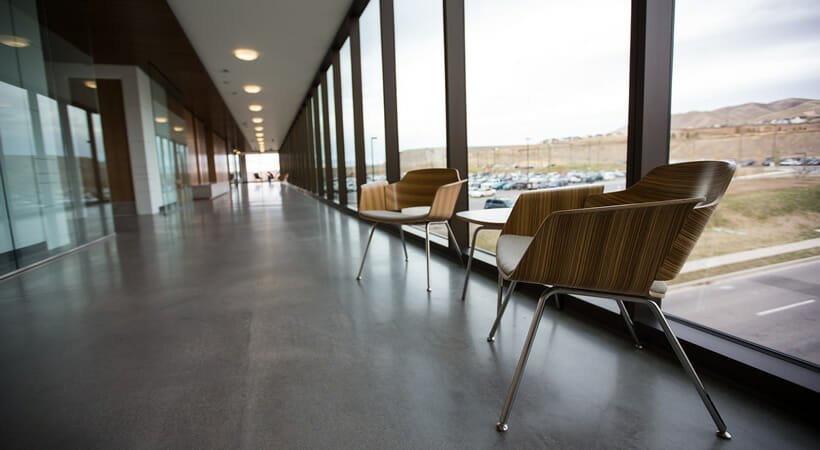Buildings located in certain climates can reduce energy costs with natural ventilation techniques. By combining sophisticated comfort models with wind tunnel modeling and an understanding of the local climate, our engineers help you save energy and money through effective natural ventilation design.
Energy bills are among a building’s greatest operating costs. Even the most efficient mechanical HVAC systems draw large amounts of power. Some building managers try to reduce costs by imposing restrictive schedules and operational limits for heating and cooling systems. However, such schemes often compromise employee comfort and productivity.
When natural ventilation and HVAC systems work together, your occupants will remain comfortable and your energy costs will decrease.
What is Natural Ventilation?
Natural ventilation can be as simple as opening windows to encourage wind crossflow, but a comprehensive natural ventilation strategy can ventilate a space even during periods with relatively no wind.
How Does It Work?
Natural ventilation takes advantage of a number of environmental phenomena and design techniques to develop strategies for naturally heating and cooling a building. Factors that drive a natural ventilation scheme include:
- Diurnal temperature patterns
- Seasonal winds and climate effects
- Variation of sun angles throughout the year
- Construction materials
- Operable window placement
- Occupant comfort criteria
By combining sophisticated comfort models with wind tunnel testing and an understanding of the local climate, our natural ventilation engineers help our clients achieve comfort and lower costs.
Will I Still Need Traditional HVAC Systems?
Unless you live in reliably comfortable areas like San Diego and Honolulu, you’ll probably need mechanical heating and cooling during the coldest and hottest times of the year; however, natural ventilation can dramatically reduce or eliminate your use of these systems during periods of mild temperatures. When properly designed, a natural ventilation scheme can cool your building at night or warm it during the day. This allows you to only use your heating and cooling systems during peak periods.


